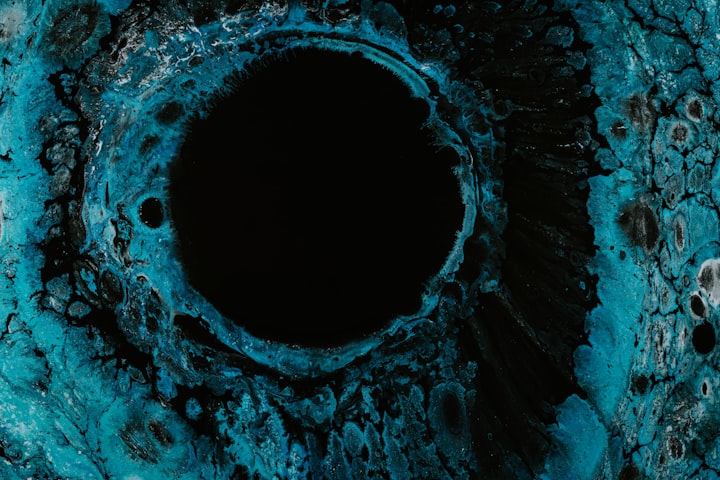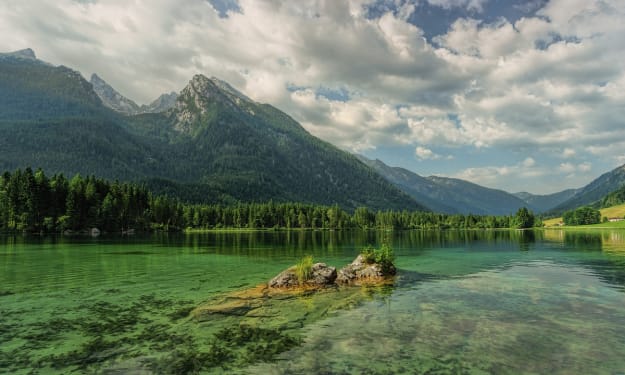5 SIMPLE QUESTIONS // Black holes
Can we explain the mystery of black holes in five simple questions? Let’s find out.

1. What is a black hole in simple terms?
A black hole is an incredibly powerful cosmic vacuum cleaner. But it doesn’t just suck in dust and debris like your household Hoover. Rather, a black hole’s gravitational pull is so strong it can capture any object – even light – that passes close to it.
So imagine space as a sheet of fabric, and a black hole as a deep funnel in this fabric. Anything that passes near the black hole is drawn into this funnel and spirals down towards what scientists call its point of singularity.
Confused? Don’t worry, so are scientists. Not much is understood about the point of singularity that’s located at the centre of black holes. We do know that it’s an extremely tiny and incredibly dense region where the laws of physics break down. It’s a little like a super-powered garbage compactor that can crush an ocean liner into something smaller than the head of a pin.
2. How are black holes formed?
Black holes begin as huge stars. Stars shine by burning fuel – like hydrogen – in their cores. But when a star runs out of fuel, it begins to collapse under its own weight. At the same time, the outer layers of the star explode in a massive explosion called a supernova. If the star is large enough – at least three times the size of our sun – a black hole is left behind.
To understand this process, let’s picture the collapse of a massive skyscraper. If the building’s support structure suddenly fails, the building crumbles inward under its own weight, and the upper floors crash down onto the lower levels.
Similarly, when a massive star exhausts its fuel, the outward pressure weakens and gravity takes over, which causes the star to collapse in on itself. And as its outer layers crash inward, a powerful explosion is created.
So what remains at the centre of the collapsed star is like the debris from the building's collapse. But in the case of a black hole, this debris is compressed to an incredibly small and dense point – called a singularity – while the outer layers are expelled into space.

3. Do black holes move?
Black holes can move through space just like any other massive object. They are subject to the same laws of physics that govern the motion of planets, stars, and other celestial bodies.
When a black hole is formed, it inherits the motion of the star that it formed from. So if the star was moving through space at a certain speed, the black hole will continue to move in the same direction and at the same speed, unless acted upon by other forces.
In addition to their inherited motion, black holes can also be influenced by the gravitational attraction of other objects in their vicinity. For example, if a black hole passes close to a star or another black hole, the gravitational force between them can cause the black hole to change direction or accelerate.
4. Where do black holes lead to?
Sci-fi flicks would have us believe black holes are portals to parallel universes or wormholes through time. Unfortunately, neither are likely.
Rather, scientists believe that any object that enters a black hole is on a one-way journey towards its point of singularity, where it will probably be crushed by immense gravitational forces.
Although, the true nature of what happens inside a black hole is not well understood, and is currently an area of active research and speculation.

5. Could a black hole destroy Earth?
The nearest known black hole to our solar system – called V616 Monocerotis (or V616 Mon) – is located about 3,000 light-years away. At this distance, it poses no danger to Earth. That’s because the gravitational pull of a black hole diminishes quickly with distance, and it’s unlikely that a black hole would pass close enough to Earth to destroy the planet.
However, that’s not to say it’s impossible. If a black hole were to come very close to Earth, it could disrupt the orbits of nearby objects, including planets or asteroids. This gravitational disturbance could lead to chaotic interactions between planets or other celestial bodies and disrupt the stability of our solar system.
Additionally, if a black hole were to capture and absorb a significant amount of matter, such as a star or a gas cloud, it could generate and release intense radiation and powerful jets of particles. That’s not a scenario we want anywhere near our neighbourhood.
Is there a complex topic you’d like us to explain in five simple questions? Let us know @ THE MALCONTENT.
About the Creator
Shane Peter Conroy
Shane is just another human. He writes, he paints, he reads. He once got his tongue stuck to the inside of a freezer. Actually, he did it twice because he thought the first time might have been a fluke. https://themalcontent.substack.com






Comments
There are no comments for this story
Be the first to respond and start the conversation.